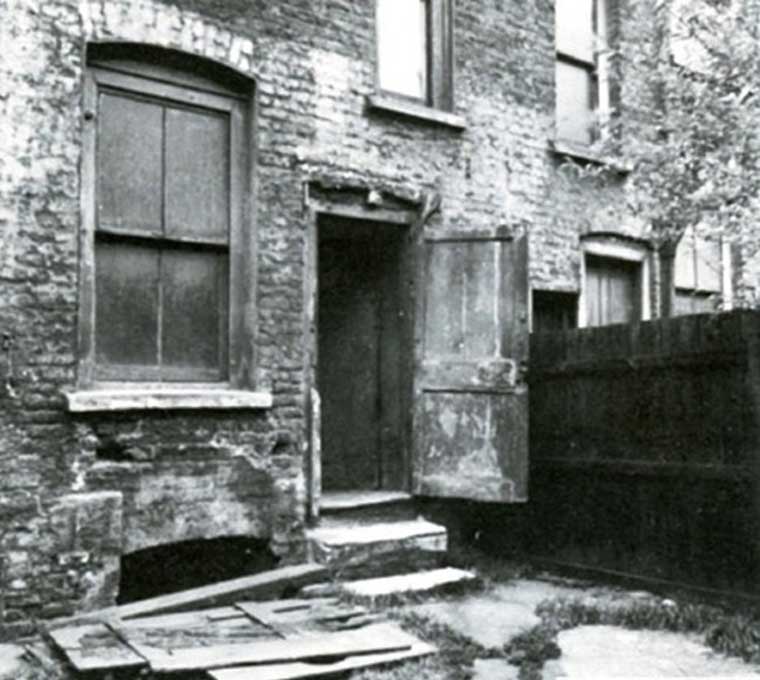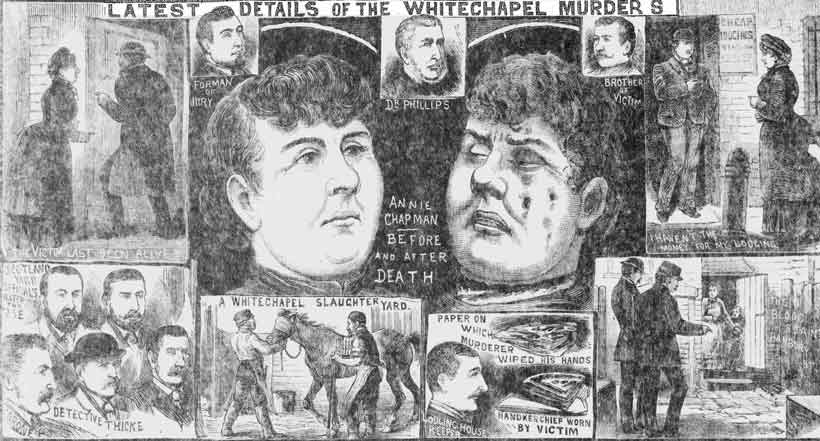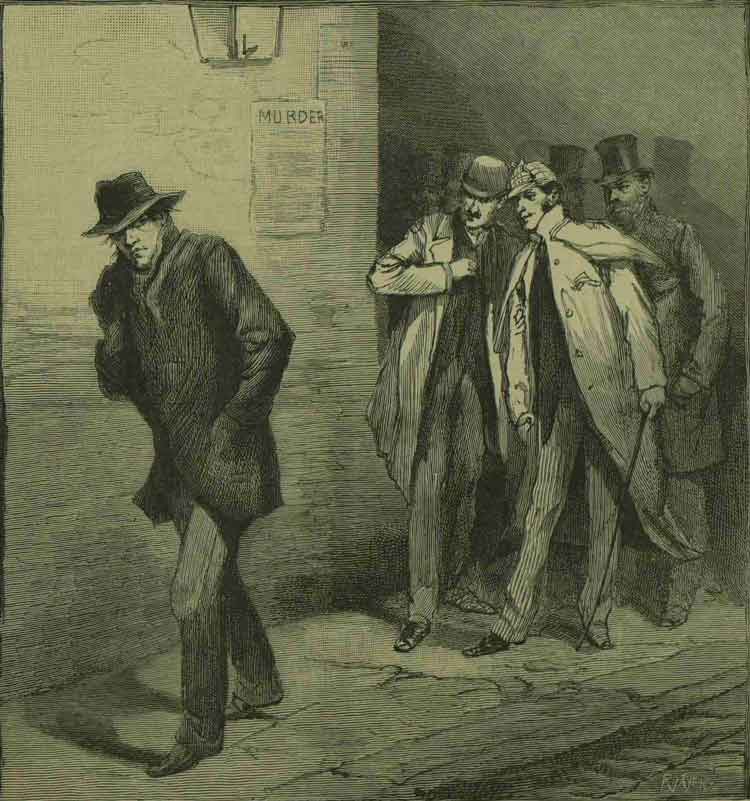One thing that tends to get overlooked in written accounts of the Jack the Ripper murders, is the effect that the crimes had on those whose names were suddenly thrust into the media spotlight by the sudden notoriety that their association with the crimes gave them.
When the body of Annie Chapman was discovered in the backyard of 29 Hanbury Street, on the 8th of September, 1888, it was soon being reported in the newspapers that rooms of number 29 were being sublet out by Mrs Richardson, who ran a packing case manufacturing business from the cellar of the building.
Mrs Richardson appears to have been genuinely, and understandably, shocked by the fact that such a brutal murder could have taken place in the backyard of her premises, and she was eager to express her anger and dismay at the “slur” that the association with the crime had placed on the respectability on her place of residence and business.
To that end she gave an interview to Lloyd’s Weekly Newspaper which was published on Sunday September 16th, 1888.
The interview is interesting in that, not only do we learn of what it was like for someone who found themselves caught up in the excitement of the aftermath of a Whitechapel murder, but we also get the intriguing revelation that the victim, Annie Chapman, was known in both the house and the street in which her murder had occurred.:-

INTERVIEWS WITH MRS. RICHARDSON AND HER SON
“Our representative on Friday again visited 29, Hanbury-street, and saw Mrs. Richardson, who is naturally greatly shocked that such a terrible crime should have been committed there.
As her rooms are used for prayer meetings once a week, both she and the landlord are very angry at anything like a slur on the respectability of the house.
ANNIE CHAPMAN WAS KNOWN THERE
It seems to be certain that the murdered woman was known there.
Mrs. Richardson said: “When I saw the murdered body I was so shocked I did not like to look particularly at her face, but I have no doubt it is the dark woman that used to come round with cotton and crochet work, and I have bought off her many times when she has said that she has been hard up.
She used to come round to these houses, and other neighbours used to buy off her too, and lend her money when she said she had not enough for her lodgings.
She then expressed her great indignation that her son, John, should have told the coroner that people came into the house, for improper purposes.

PEOPLE USED THE HOUSE FOR MANY PURPOSES
John Richardson repeated to our reporter his statement before the coroner – that for years, even before his father’s death, it had been known that parties out of the street came and used the passage, landing, and stairs for sleeping and other purposes, and also that they used to go through to the back.
As “Dark Annie” had been in the habit of coming so often to the home, he had no doubt in his own mind that she was well acquainted with the place.
HIS TIME ON THE MORNING OF THE MURDER
Richardson gave a detailed account of his time on the morning of the murder from 10 minutes to five, when he stated that he went straight to Spitalfields market and began to work.
He mentioned the names of the people he worked for, and a number of men who saw him there, and also of his general movements throughout the day.
A CURIOUS INCIDENT
Passing afterwards through Spitalfields with John Richardson, a curious incident occurred.
A rough, demented-looking fellow came from a group, grinning, and, with clenched fist, muttered some threat to John Richardson.
THE REAL LEATHER APRON
In answer to the question “Who is he? What does he mean?” Richardson then replied: “That is a man who they say is mad. A great many of the women and people round our house think that he is the most likely man that they know of to commit a murder. In fact many of them say that he is the real ‘Leather Apron.’
When asked to go back to inquire what the man meant, Richardson said, “You had better not, for he would be most likely to spring upon you and knock you down at once, without a word. I shall not stop to speak to him, for he is very dangerous and a great many of the women think that he is the murderer.”
WORK OF THE VIGILANCE COMMITTEE
The newspaper then featured an article about the setting up of the first of the area’s Vigilance Committees:-
“The first of the four Whitechapel murders having been committed immediately in the rear of Toynbee hall, a Vigilance committee was set on foot to second the efforts of the police in the discovery and prevention of crime.
Since the latest tragedy the exertions of the committee have been redoubled.
FROM MIDNIGHT TILL DAWN
Some of the members in couples now perambulate the districts from midnight until dawn. They observe all that goes on in the streets, report any suspicious proceedings to the authorities, and keep a minute account in writing of everything transpiring, from setting out until their return.
Much voluntary help has been tendered, one of the peregrinators on Thursday night being a military officer residing in Western London.
The secretary expressed his belief to our representative yesterday that the recent East-end murders may be the means of better arrangements being formed than exist at present in the neighbourhood where these atrocities have been perpetrated, for the protection of life and property.

A COLONY OF LOAFING RUFFIANS
This active member of the committee states (speaking from a quantity of evidence) that no quarter of the metropolis has such an “after dark” colony of loafing ruffians as that of Spitalfields, lying between Wentworth and Bishopsgate streets.
It appears that by day they thieve and cadge throughout wealthy London, and return to Spitalfields and indulge in all sorts of violence and licentiousness, winding up with a “doss.””
